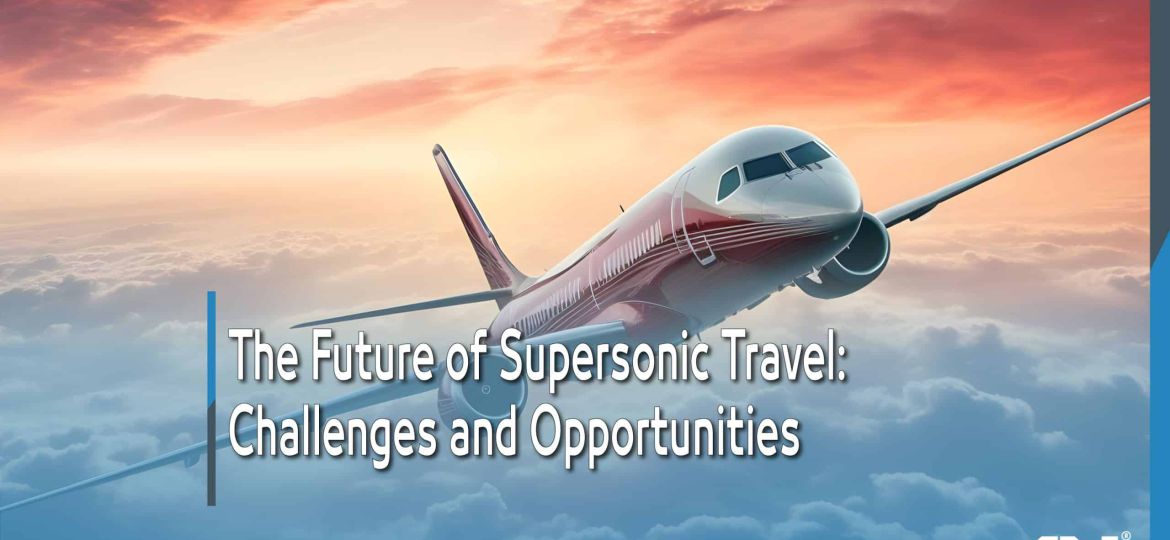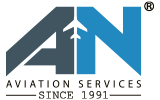
Supersonic travel is making a significant return after more than two decades since the Concorde was retired. With growing market demand, new technologies, and industry support, the concept of flying faster than the speed of sound is becoming a commercial reality once again. This blog outlines why supersonic travel is coming back, what projects are underway, the challenges involved, and how companies are preparing for this new era.
Why Supersonic Travel is Making a Comeback?
Rising Demand for Faster Business and Luxury Travel: Time efficiency is a top priority for business travelers and high-net-worth individuals. There is increasing interest in reducing travel durations for transcontinental and intercontinental routes. Supersonic aircraft offer a solution that aligns with the needs of executives, entrepreneurs, and VIP passengers who value speed, convenience, and exclusivity.
Technological Advancements Since the Concorde Era: The Concorde was a remarkable engineering achievement, but faced significant limitations in noise, fuel efficiency, and cost. Modern aerospace engineering has addressed many of these issues with improved materials, quieter and more efficient engines, and optimized aerodynamics. These innovations are essential to making supersonic travel both feasible and commercially sustainable today.
Current Supersonic Projects and Key Players
Here’s an overview of the current supersonic projects and key players in the aviation industry working to bring back faster-than-sound air travel:
1- Aircraft Specifications and Expected Launch Timeline (2029)
Boom Supersonic is one of the leading companies advancing supersonic travel. Their flagship aircraft, the Overture, is designed to carry 64 to 80 passengers at Mach 1.7, twice the speed of current commercial jets. The company expects to begin passenger service by 2029, marking a significant milestone in the reintroduction of high-speed air travel.
2- Airline Partnerships: United, American, and Japan Airlines
Leading global carriers are showing confidence in supersonic technology. United Airlines has committed to purchasing 15 Boom Overture jets, with options for more. American Airlines and Japan Airlines have also expressed interest and placed pre-orders. These partnerships reflect a strong belief in passenger demand and long-term potential.
3- Aerion’s Legacy and Emerging Startups
While Aerion Supersonic ceased operations in 2021 due to financial challenges, its pioneering work continues to influence new entrants. Several emerging startups are now pursuing the development of both commercial and private supersonic aircraft, contributing to innovation and competition in the sector.
4- NASA’s Quiet Supersonic Research: X-59
NASA’s X-59 project is focused on eliminating one of supersonic travel’s most significant barriers: the sonic boom. The aircraft is being designed to generate a quiet “sonic thump” instead of the loud boom associated with previous supersonic jets. If successful, it may lead to the easing of current overflight restrictions.
The Major Challenges Facing Supersonic Travel
While progress in supersonic aircraft design is promising, several major challenges still stand in the way.
Regulatory Hurdles and Overflight Bans:
Current regulations in many countries prohibit supersonic flight over land due to the disruptive nature of sonic booms. To enable more flexible routing and wider adoption, regulators will need to revise long-standing policies. This requires collaboration between manufacturers, aviation authorities, and environmental agencies.
Certification Standards for New Aircraft Types:
Supersonic aircraft present unique design and performance characteristics that fall outside traditional certification frameworks. Regulatory bodies such as the FAA and EASA must develop new standards to ensure the safe introduction of these aircraft into commercial service.
Environmental Concerns:
- Fuel Efficiency and Carbon Emissions: Supersonic jets consume more fuel than conventional aircraft, raising concerns about their environmental impact. Reducing emissions while maintaining high-speed performance is a key objective. Manufacturers are exploring sustainable aviation fuels (SAF) and engine innovations to address this issue.
- Noise Pollution and Mitigation Strategies: Noise remains a critical issue. New aerodynamic designs and quieter propulsion technologies aim to reduce external noise both during takeoff and when breaking the sound barrier. The success of NASA’s X-59 project could lead to significant improvements in this area.
Infrastructure and Airport Compatibility:
- Specialized Ground Support Equipment: Supersonic aircraft require specialized handling procedures, equipment, and safety protocols. Airports must invest in updated infrastructure and train personnel to accommodate these aircraft effectively.
- Limited Access to Compatible Airports: Initially, only select airports will be able to support supersonic operations due to runway length, noise restrictions, and service capabilities. This may limit route availability in the early stages of adoption.
Emerging Opportunities in Supersonic Travel
As the industry works to solve the current challenges, new possibilities are beginning to take shape. This section explores the most promising opportunities in supersonic travel, including faster business routes, growing interest in private jets, and the potential for new long-distance connections made possible by next-generation technology.
1. Business Aviation Potential
The business aviation sector is expected to be among the first to benefit from supersonic travel. With fewer passengers and more flexible routing, private supersonic jets can be deployed faster than commercial models, providing a valuable time-saving solution for corporate leaders and high-net-worth clients.
2. Expanding the Private Supersonic Jet Market
Affluent customers who already utilize private aviation are showing interest in supersonic options. Aircraft manufacturers targeting this niche could see strong early demand and high profitability, helping to fund further developments.
3. Time Savings for Executive Travelers
Reducing flight time by several hours can have a significant impact on productivity. Executives can attend more meetings, access global markets more efficiently, and achieve a better work-life balance with shorter travel times.
4. New Route Possibilities
Transatlantic Flights in Under Four Hours: Routes such as New York to London, traditionally requiring 7 to 8 hours, could be completed in as little as 3.5 hours. This opens new possibilities for rapid business and diplomatic travel.
Nonstop Asia-Europe Flights: Supersonic jets have the potential to connect cities across Asia and Europe directly, eliminating stopovers and reducing total journey time. This improvement would benefit both the business and premium leisure travel segments.
5. Required Technological Advancements
Quieter Sonic Boom Capabilities: Developing airframes and propulsion systems that minimize sonic boom intensity is essential for enabling overland supersonic travel. Research from NASA and private firms is advancing this goal.
Compatibility with Sustainable Fuels: Using SAF is not only a regulatory requirement in many jurisdictions but also a public expectation. Supersonic manufacturers are working to ensure their engines can operate efficiently on cleaner fuel alternatives.
Modernized Air Traffic Control Systems: High-speed aircraft will need enhanced air traffic management systems capable of maintaining safe separation, tracking rapid movements, and ensuring coordination with slower subsonic aircraft.
How AN Aviation Services is Preparing for Supersonic Operations?
AN Aviation is actively developing operational procedures tailored to supersonic aircraft. These protocols will ensure safety, efficiency, and compliance during ground operations.
Regulatory Compliance Frameworks
We are working closely with regulatory authorities to understand and integrate new compliance requirements specific to high-speed aviation. We aim to offer fully approved services from the moment these aircraft enter operation.
Workforce Training for Next-Generation Aircraft
Our teams are undergoing specialized training focused on the unique technical and operational demands of supersonic jets. This preparation ensures we are ready to support clients as soon as the aircraft are introduced.
Supersonic travel is no longer a concept of the distant future. With clear technological progress and rising market interest, it is on track to redefine global aviation in the next few years. While there are significant regulatory, environmental, and logistical challenges to address, the opportunities it offers for faster, more efficient travel are considerable.
At AN Aviation, we are committed to supporting this transition by building the infrastructure, knowledge, and partnerships necessary to support supersonic aircraft from day one.

